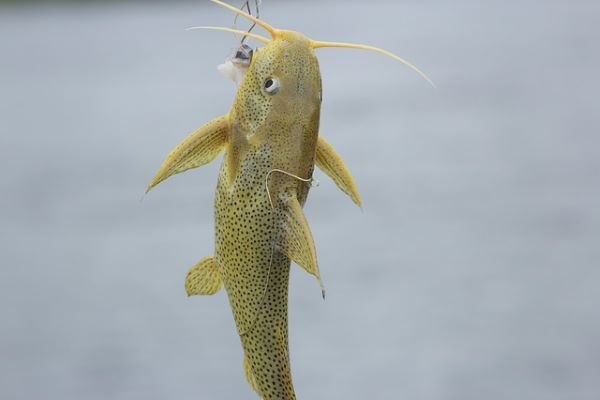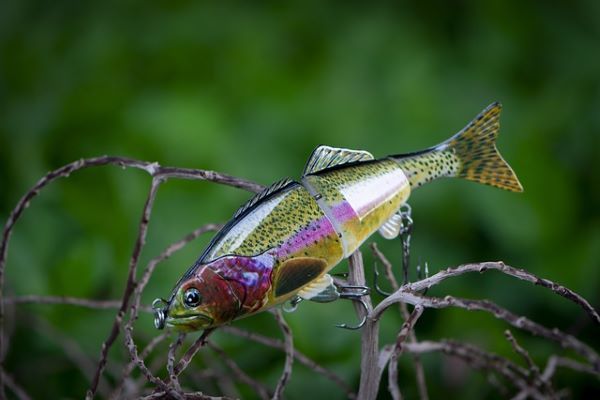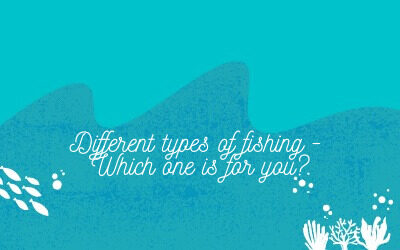Both live bait and artificial lures have their place in modern-day fishing, with different fishing enthusiasts favoring different ones at different times. In this article, we put live bait and artificial lures head to head to see which of the two, if any, comes out on top.
The difference – Live bait vs artificial lures
The main difference between fishing with live bait and artificial lures is that you’re using live prey animals as bait with one and using a reusable artificial lure with the other. Although both artificial lures and live bait can stimulate a fish’s sight, only live bait can stimulate other senses, like their sense of smell. This is the main difference between when and how these two different types of bait are used.
In this article, we’re going to dive into the topic of both live bait fishing and fishing with artificial lures in more detail so you know which is better in your situation. As with all things worth knowing the answer to, the general answer to which one is better is “it depends” so the topic could do with a little more explanation!

Live bait fishing
Live bait fishing uses live bait to lure fish in and ultimately catch them. Using live bait comes with some major advantages, in particular the fact that you can fish in murky waters as well as clear waters, and you can fish for both sight hunters as well as fish that rely more on their sense of smell for finding food.
Many fish, especially those that live in less clear waters, rely mainly on their sense of smell as well as ability to feel vibrations in the water to find prey. When you’re fishing for scent hunters, using live bait, ideally bait identical to what they would normally feed on, is going to give you a much better chance to hook a fish. Live bait generally also creates more realistic vibrations which may further help you catch the fish you’re looking for. There are various types of live bait used in fishing, ranging from highly popular worm varieties to other insects and even self-caught baitfish.
Even though live bait is very effective for catching fish that rely on their sense of smell and vibrations for finding food, it can also be very effective for catching sight hunters. Most fish won’t just rely on their sight or smell to find prey, but a combination of both. Both live bait and artificial lures can work well for these fish, but live bait is usually preferred.
Fish that rely heavily on sight to find food can be fished very well using artificial lures, but that’s not to say that live bait won’t work. There are many live baitfish that can draw the attention of sight hunters, and although for some, artificial lures may be preferred, live bait can work well too.
The ugly
Bait fishing obviously requires you to get your hands on live bait. This can be bought but oftentimes, you’ll have to catch it yourself. Bait fishing can get messy and requires you to use up your lures over time. This means that you’ll generally need to take more stuff with you on your fishing trip. When traveling abroad, it can be even more difficult to find the right live bait, especially if you’re traveling to a remote fishing destination. In this case, catching your own may be your only choice which will take up time.

Advantages:
- Very effective at catching a large variety of fish
- Easier to catch fish with
- Fish in various different conditions
Disadvantages:
- Can get messy
- Can take up more of your time/resources
Fishing with artificial lures
Artificial lures are very popular when fishing for sight hunters. A lot of fish are very sensitive to movements in their surroundings, which means that artificial lures can be very effective for catching these types of fish. For catching certain species of fish, artificial lures can actually be more effective than live bait as they can get the attention of the fish easier.
Artificial lures are also very easy to take with you and, although they will break on occasion, you can use them to catch far more fish than with one piece of live bait. Using artificial lures also prevents you from having to catch live bait and is (usually) a lot less messy than fishing with live bait. If you’re going on a fishing trip, making sure you have artificial lures with you, regardless of whether or not you have live bait available, is usually a good idea. They’re very inexpensive and don’t take up much room!
One of the biggest drawbacks when using artificial lures is that it’s harder and therefore takes more skill to master. It’s also more demanding since you’re constantly moving the lures in many varieties of lure fishing, due to the fact you’re simulating a live prey animal. The last disadvantage is that you’re limited to clearer waters in most cases, as murky waters will make it difficult for the fish to spot your artificial lure. This isn’t always the case though, since many fish rely on vibrations which can be mimicked by artificial lures too.
Advantages:
- Clean
- Easy to travel with
- Good for sight hunters
Disadvantages:
- Not as easy
- Less appealing for certain types of fish

Which is better?
There’s no easy answer to whether live bait or artificial lures are better, but each is better in specific situations for different people. If you’re just starting out or aren’t sure, then live bait can be your best (and easiest) bet. It’s easier and if you do your research, you should be able to dangle something appealing on the end of your line for the type of fish you’re looking to catch. This saves a lot of work moving the lure and trying to mimic the animal you could otherwise just catch and use as bait directly.
If you love fishing with artificial lures, your travelling, or you’re fishing for a fish that relies greatly on sight for finding prey, artificial lures can come out on top. They’re cleaner, easier to take with you and can create a strong stimulus to a fish’s eyesight. If you do go for artificial lures, make sure you check out our post on fly fishing vs spin fishing!
Will it make a big difference to my success?
Yes and no. Although bait fishing is generally easier, it’s not the best way for all fish varieties. Make sure you know what you’re fishing for and what kind of prey items this fish likes before choosing whether to go with live bait or artificial lures. This way, you can be sure that you’re giving yourself the best chance of success!
Conclusion
All in all, there’s no one-size-fits-all when it comes to whether live bait or artificial lures are best. Live bait works for a wider variety of people and fish, but it’s not always the best or the most fun. In order to pick the best one for you, take into account the type of fish you’re looking to catch, the waters you’re fishing in and your own preference to make the right decision between live bait and artificial lures.
If there’s anything you feel we’ve missed in this post or you have any questions, feel free to leave them in the comments and we’ll get back to you as soon as possible. This way, the answer we provide is visible to everyone and we can add it into the article at a later date 🙂

![NRS Chinook vs Chinook OS – Which is Best? [2023]](https://catchos.com/wp-content/uploads/2022/08/NRS-Chinook-vs-Chinook-OS-400x250.jpg)



0 Comments
Trackbacks/Pingbacks